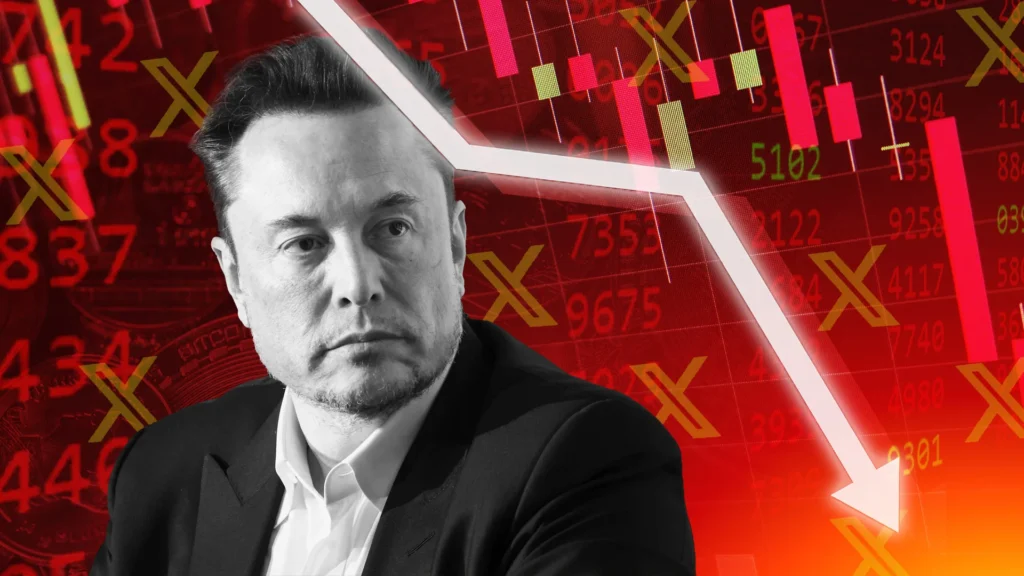When Elon Musk finalized his $44 billion takeover of Twitter in October 2022, he declared it a victory for free speech, innovation, and, in his words, “civilization.” Just over a year later, the platform’s transformation into X stands as a cautionary tale of ambition, hubris, and the volatile intersection of tech and social media.
The High-Stakes Bet: Musk Takes Control
Twitter was already a battleground of opinions when Musk, the billionaire entrepreneur behind Tesla and SpaceX, made his bid. He framed the purchase as a mission to restore “free speech” and eliminate what he saw as oppressive content moderation.
His first moves were drastic: firing top executives, dissolving the board, and slashing the workforce by nearly 80%. Advertisers fled in droves. Twitter Blue, a paid verification system, was rolled out hastily, allowing impersonators to wreak havoc. Meanwhile, Musk’s tweets—often erratic, sometimes offensive—became the de facto PR strategy.
“It was a masterclass in how not to run a social media company,” said Scott Galloway, a professor of marketing at NYU Stern. “He treated Twitter like one of his engineering projects: break it apart, rebuild from scratch. But social media runs on trust, and trust doesn’t work that way.”
X Marks the Chaos: The Rebranding Gamble
In mid-2023, Musk announced Twitter would become X, the “everything app,” modeled after China’s WeChat. The bold rebranding aimed to transform the platform into a hub for payments, shopping, and AI-driven services.
The problem? Users never asked for it.
The Twitter brand carried cultural weight—from its role in political revolutions to the meme economy. Ditching the iconic blue bird alienated core users, while the app’s functionality became increasingly erratic. Glitches, shadow bans, and the rise of unmoderated content drove more users to alternatives like Threads, Bluesky, and Mastodon.
“Musk’s vision for X was ambitious, but ambition doesn’t equal execution,” noted tech analyst Casey Newton. “He underestimated how fragile Twitter’s ecosystem was.”
The Exodus: Advertisers and Users Walk Away
Social media platforms live and die by engagement and ad revenue. Musk’s insistence on “absolute free speech” led to a surge in hate speech, misinformation, and brand-damaging controversies. Major advertisers—including Apple, Disney, and Coca-Cola—pulled out. By late 2023, Twitter’s ad revenue had dropped by nearly 50%.
Users, too, began voting with their feet. Twitter’s daily active users reportedly fell from 238 million at the time of the acquisition to below 200 million by early 2024. The decision to introduce a paywall for certain features only accelerated the decline.
“A social media platform thrives on network effects,” said former Twitter executive Bruce Daisley. “Once you break that loop, it’s hard to repair.”
The Musk Factor: Visionary or Saboteur?
Elon Musk’s influence over X has been a double-edged sword. His dedicated fanbase remained loyal, but his unpredictable leadership alienated others. Public feuds with journalists, erratic policy changes, and his own controversial tweets often overshadowed any innovation.
Perhaps the biggest irony? Musk himself acknowledged the platform’s struggles. By early 2024, he admitted X might fail, even as he continued to push for AI-driven improvements and alternative revenue models.
What’s Next for X?
With declining ad revenue, a dwindling user base, and an increasingly toxic reputation, X faces an uncertain future. Musk’s ultimate goal—to transform it into a financial powerhouse beyond social media—remains an uphill battle.
As competitors rise and social media continues to evolve, one question lingers: Was Musk’s Twitter acquisition a bold move that simply needed time, or was it one of the most expensive miscalculations in tech history?
For now, X remains in limbo—a testament to how even the most powerful disruptors can misjudge the platforms they seek to reinvent.






